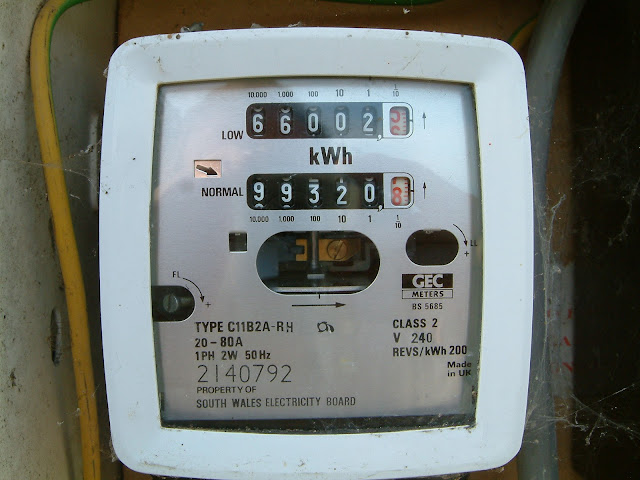The 'big six' electricity companies in the UK understandably get concerned when they see from their records that a customer's bills have suddenly become smaller. If they see that decrease in their income to have coincided with the installation of a 'micro-renewables' at the customer's premises, the conclusion they come to is: the supply meter must be being made to run backwards when energy is exported to the grid.
Such has been the accusation levelled at me in this past week by SSE (Scottish and Southern Electricity).
It is completely reasonable that SSE should want to investigate when they think such a situation has arisen, but the somewhat irritating thing is the way they go about it. Instead of writing to say what their suspicions are, they say this: "we have come to know that your meter is incompatible with the micro-renewables system that you have had installed. On a regular basis we extract data from flows that are sent between ourselves and your local network operator. It was highlighted on this report in January that we have come to the knowledge that the meter at your property is incompatible".
Part of the reason why they write such utter nonsense is because the government in the UK has set a target of having 'Smart meters' installed in all domestic premises by the year 2020. The onus for meeting this target is upon the "big six" electricity companies. So given a situation where they think a meter is running backwards, rather than saying so they just say "your meter needs to be replaced".
From a consumer's point of view however, having an old-style meter replaced by a Smart meter carries implications, - possibly quite major financial implications affecting the income he gets from his "micro-renewables" installation. This comes about because a Smart meter will measure precisely how much energy is exported, so instead of export payments being based on "deeming", they will come to be based on a metered reading. For a Powerspout owner where deeming is reckoned at 75% of generated kWh's, this will mean a severe reduction (read here for more about why). And for people who have any of the devices (such as an Immersun or a SolarCache) that divert surplus energy to alternative loads within the home, - again Smart metering will be a hit on the income they receive from that part of the Feed-in-Tariff which comes from the export payment.
Now SSE is, in my opinion, a good company. I have held them in high regard ever since they helped with the installation of a 300 kW hydro at a small hospital in Uganda where I used to work (see here). So when I took up my pen to object to having my meter replaced, and to object to the manifestly fabricated evidence they put forward for replacing it, I did so with a feeling of respect.
The incontrovertible weapon I have for resisting is that my meter does NOT run backwards. So if that argument is their sole reason for insisting on replacement, - their case fails. If, on the other hand, they were just using that as a Trojan Horse argument in order to get one more old-style meter replaced by a Smart meter to help meet the 2020 target, then they will have to think again. Although the supply meter at my house is the property of SSE, any change to the installation needs to be made with the agreement of the customer, - and from me that is not likely to be forthcoming.
Post script added 21 Feb 2018: an interesting, if trifling, point of detail came to light after writing the above entry when SSE sent another email explaining why they were so insistent about my meter being able to go backwards. They had the wrong entry in their records for the type of meter I had. They had it recorded as Type C11B2A-R, - which is to say lacking the "H" at the end (see photo below). Apparently the 'H' is all important: lacking it means the meter can go backwards; having it means it can't. So now we know !
...experience gained from the operation of a microhydro plant, probably of interest mostly to other Powerspout owners. At the start, in 2014, the installation was new and there was much to write about but as time has passed there is less. So new posts will only be written if something interesting comes along, - look below to see if there is a new post.

6.48 mm diameter nozzle delivering 0.91 l/s to the runner which is rotating at 1084 rpm and generating 225 watts into the grid at an overall efficiency of 47%.

2 comments:
I had a smart meter fitted in 2016. It's just a free and very accurate energy meter. I love mine!
As mine is an early one it's long since stopped being "smart", having changed suppliers a few times. But being able to read my usage at a touch of a button instead of faffing in a cupboard is nice.
I'm with you on the convenience aspect Dan, - although my meter is old style, electro-mechanical and doesn't have the feature yours has of relaying consumption to an in-house display, I do have that info available. It comes indirectly via the device which diverts surplus energy. Like you, I wouldn't be without it. Thanks for commenting.
Post a Comment